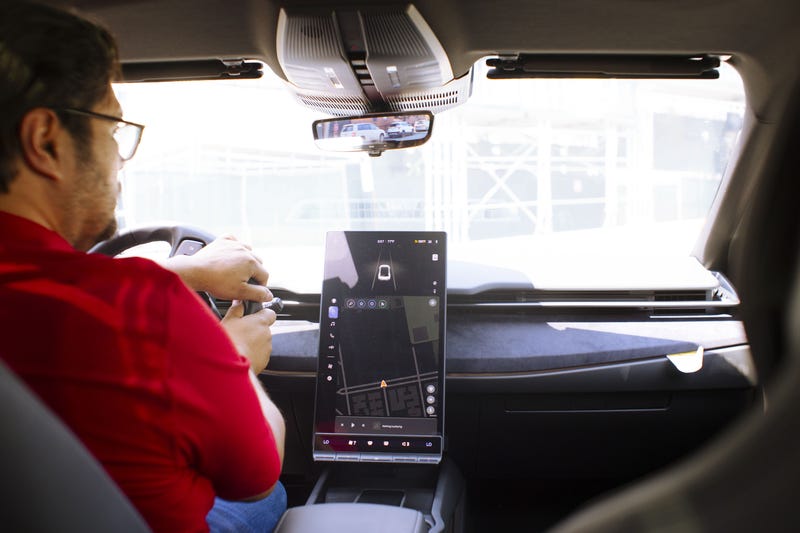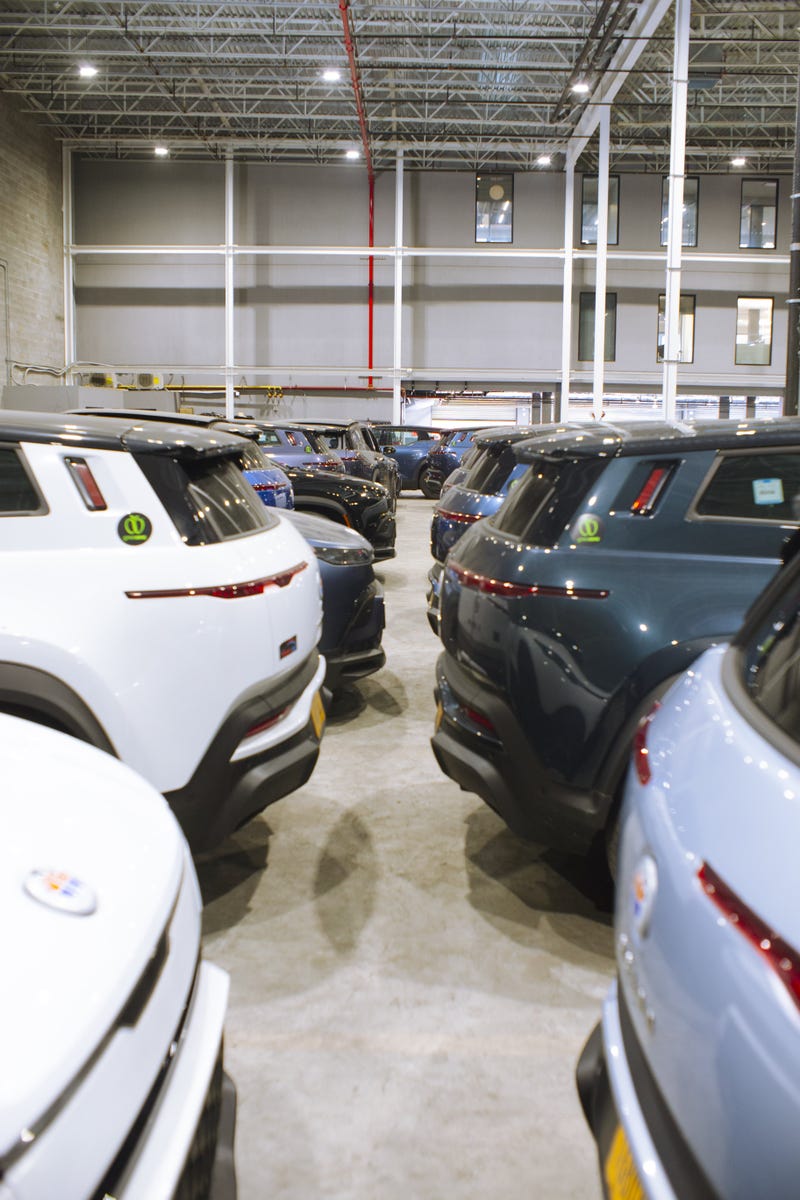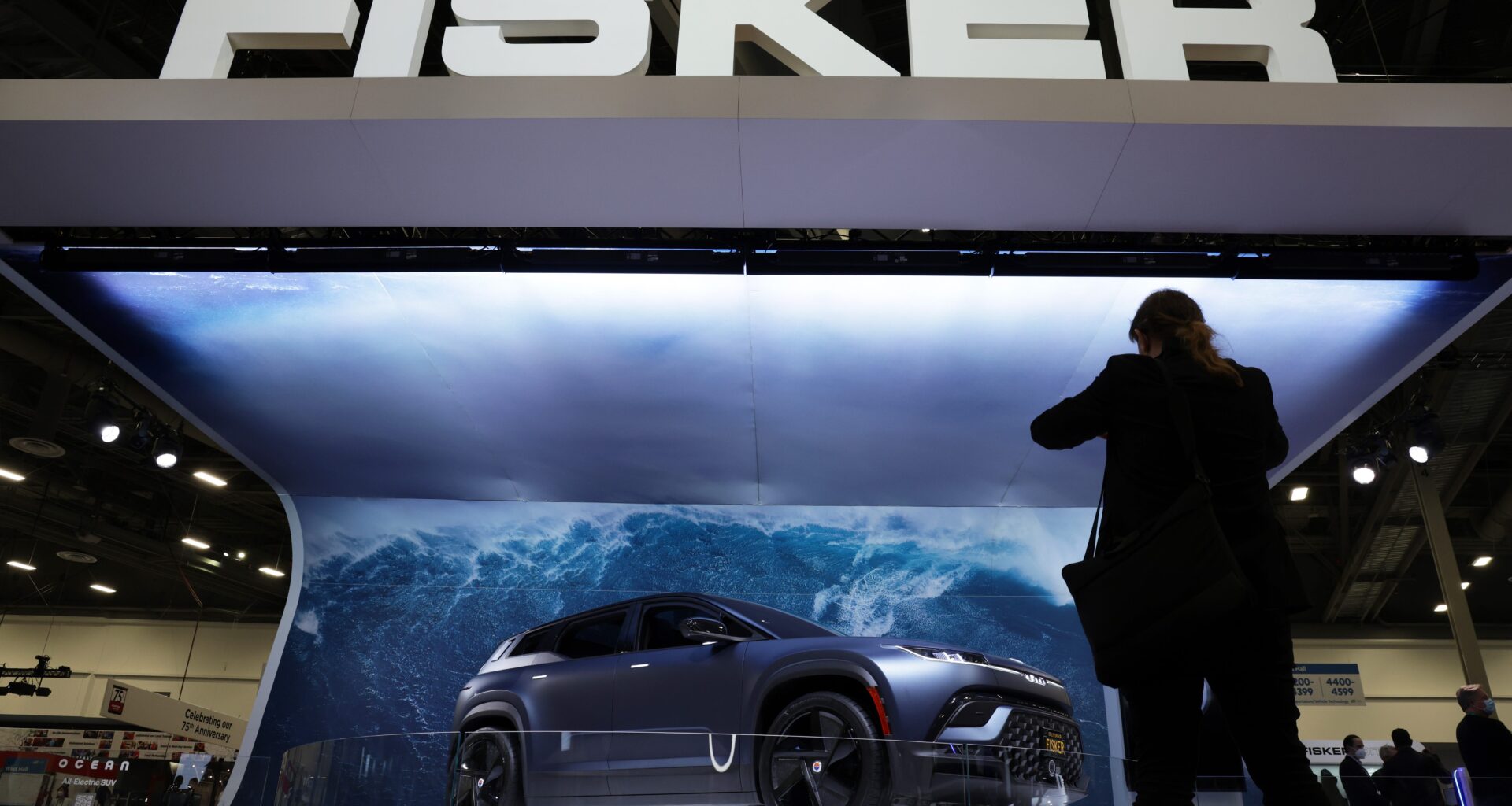NEW YORK (BLOOMBERG) — Even under the unrelenting sun of the hottest day of the year in New York City, Ruben Baldera looks cool. He’s comfortably air-conditioned in his charcoal gray Fisker Ocean, a luxury electric SUV that originally retailed for $70,000 or more. But the company that owns this SUV and rents it to Baldera bought it brand-new last year for a mere $16,000.
Once one of the next-big-thing EV startups poised to take on Tesla, Fisker Inc. declared bankruptcy in 2024, having built about 11,000 examples of its first and only model. (That’s not counting the previous car company started by founder Henrik Fisker, which went bust in 2013 before making 2,500 cars.) A company called American Lease, the largest fleet operator in NYC, swept in to buy up about 2,800 unsold Ocean SUVs; now American Lease rents them to ride-hailing and for-hire car service drivers like Baldera at a rate of $330 per week.
So for the next few years, the streets of New York City will be just about the only place in the world where you’re likely to see a Fisker Ocean in the wild.

Ride-hailing driver Ruben Baldera behind the wheel of the new Ocean he rents.
Photo credit Raphael Orlove/Bloomberg CityLab
Even amid the 100,000-plus for-hire vehicles across the city, it’s easy to spot Fisker Oceans. The mid-size crossovers look something like a BMW X3, but not quite, and some models boast unusual features like a solar roof that feeds extra juice to the battery when the car is parked in the sun. Check the license plate: If it starts with a T and ends with a C, it’s licensed by the NYC Taxi and Limousine Commission. American Lease is responsible for every one of these for-hire Fiskers.
The curious collection of orphan EVs came about because of a collision between local and national electrification policies. In 2023, New York City launched the Green Rides initiative, mandating that all Uber or Lyft rides be either wheelchair-accessible or zero-emissions by 2030. But the supply of affordable all-electric vehicles is very limited, as the administration of President Donald Trump has sought to eliminate federal incentives and tax credits and roll back pollution and fuel economy standards that encourage EV uptake.
That left fleet operator American Lease, which has about 5,000 vehicles, with few low-budget options to replace their existing gas-powered cars. In early 2024, when the rental giant Hertz announced it would sell off much of its EVs, American Lease considered loading up on used rental Teslas. Then another, crazier option emerged.
“We were sitting at lunch and I was reading an article about how Henrik Fisker, who founded Fisker, had listed his home for more than the market cap of the company at that point,” says American Lease executive vice president Josh Bleiberg. “So I was like, ‘Screw it: Let’s buy Fisker.’”
Ocean’s Unraveling
Fisker’s June 2024 collapse came about for multiple reasons. In 2020, the fledgling company went public through a special purpose acquisition company, or SPAC, allowing it to bypass the traditional IPO process. It was part of a pandemic-era mania for SPAC mergers that included several other EV startups, including Lordstown Motors, Nikola and Canoo. All have since gone under.
But Fisker also had a product with significant problems: When the Ocean hit the market in 2023, reviews of the model were scathing, as testers wrestled with its glitchy tech and federal safety regulators demanded six recalls for safety issues.
Still, Baldera says he isn’t worried about piloting his rented Ocean through the mean streets of New York, and his has been trouble-free so far. “No problems” is his quick summation.
Well, other than the ghost light. “Sometimes it goes on by itself,” Baldera says, pointing to the dome light over the passengers, which can flicker for 10 or 15 minutes before it resets itself.
Like many other American Lease Ocean drivers Bloomberg CityLab spoke to, this is Baldera’s first EV. Going electric has been easy: He powers up near his home in the Bronx at night, when electricity rates are lower, and covers “close to 100 miles a day.” The Ocean can do more than 300 on a charge (so long as he stays away from “sport” mode, good for a 0-60 launch in a blistering 4 seconds).
Knowing that drivers will spend time charging, the company makes its Oceans less expensive to rent than the equivalent gas-burning Toyota, but they don’t feel like a budget option. These Fiskers are nice inside, with a high-quality interior full of “eco-leather” and other green materials, a full-length sunroof and a “California Mode” that drops all the windows, including the two tiny rear “doggie” windows.
Actually, watch out for California Mode. Some of those windows can get stuck and need a reset back at American Lease’s Bronx headquarters, where Fiskers are stacked three or four high on vertical parking lifts.
It’s just a few blocks from the Hunts Point Terminal Market, the main food distribution center for the city. Only a fraction of American Lease’s Oceans are here — the rest are squirreled away in storage facilities around the city. Nearby is BHP Service Center, an old-school repair shop that handles the body work for American Lease’s Fiskers, and the company recently set up its own lot around the corner for crashed Fiskers as they come in. This industrial corner of Hunts Point, where semi-trucks lumber past junkyards and wholesalers, is fast becoming home base for a cottage industry devoted to the dead brand.
In an office overlooking American Lease’s main warehouse, Bleiberg explains how it came about.
“We have traditionally been a Toyota shop, and we have a semi-large quantity of the Toyota bZ4X,” he says, mentioning the mainstream EV that retails for around $40,000.
Fisker’s fire-sale Oceans could be had for about $16,000 per car, somewhere in the mid-$40-million range all-in. Elsewhere, it’s not difficult to buy a new made-in-China EV for $16,000 or less, but to get such a deal in the US, American Lease had to take a chance on something very left field — and not without complications.

A sea of Oceans in Hunts Point. American Lease owns about 2,800 examples of the ill-starred model.
Photo credit Raphael Orlove/Bloomberg CityLab
According to Bleiberg, the decision to buy up the remaining Fisker inventory in summer 2024 morphed into a drawn-out process involving bankruptcy court, private owners of Fiskers, and another EV startup contracted to deal with the Ocean’s buggy software.
Like many modern vehicles, the Fisker Ocean is a “connected car.” Keeping one on the road means keeping up with constant over-the-air software updates from the manufacturer. To keep its Fisker fleet connected, American Lease turned to an EV startup called indiGO Technologies, which is developing its own line of electric delivery vans and cabs. American Lease not only put in a purchase order to buy the first Indigo EVs in a couple years, but also contracted the company to take over software maintenance.
At first, indiGO Tech would just be managing American Lease’s cars, said company CEO Will Graylin, but it turned out that they’d also need to be responsible for thousands of Fisker Oceans in private hands across the US and Europe: “It wasn’t anticipated.”
American Lease first worked as an intermediary between the Fisker Owners Association (which represents private Ocean owners) and indiGO (which was trying to fix Ocean’s final software update). In the automaker’s dying months, Fisker’s engineers had raced to complete a software package that included updates required to comply with federally mandated recalls; it was so bloated that some owners said it was “bricking” their cars, rendering them inoperable.
After a dispute over responsibilities and payments, the FOA went independent and American Lease stepped out of the intermediary role. Now the FOA is figuring out how to manage its cars’ software, recalls and all, on its own. Meanwhile, indiGO split Fisker’s final file into three distinct parts and is having an easier time getting cars updated.
Untangling the mess took long enough that American Lease only began launching its fleet of Oceans in March. Now more than 1,000 cars are picking up rides across the city. “There are cars that break. There are cars that can be cannibalized for parts. If I can get this up to 2,200, 2,500 cars on the road,” Bleiberg says, “that’ll be full utilization.”
Only in New York
Despite their reputation for troublesome tech, American Lease’s Oceans have been working out fine so far. The cars do have their gremlins, like a too-sensitive driver-facing camera that sometimes shifts the car into park if the driver turns around in their seat. Like private Fisker owners, ride-hailing drivers swap tips for workarounds and live with the quirks.
Bleiberg is withholding judgement until seeing how the cars hold up to a full New York winter. For now there are at least plenty of spares to patch up any fender benders.
The Oceans join the company of oddball only-in-NYC vehicles pressed into livery service over the years, going all the way back to the battery-powered cabs of the Electric Vehicle Company — the biggest car company in the US in 1899. New York’s transportation ecosystem manages to attract machines you rarely see anywhere else, from the sturdy Checker Marathons still on the road nearly two decades after the last one rolled off the assembly line to the less-loved Nissan NV200 “Taxi of Tomorrow” that appeared in the 2010s.
What’s funny is that even though American Lease bought these cars to prepare for the Green Rides initiative, Bleiberg doesn’t expect the Oceans to make it to the 2030 deadline. “We don’t anticipate these cars lasting much past 150,000 to 200,000 miles,” he says. That’s about four years of hard ride-hailing service.
Within a few years, Bleiberg expects automakers will be able to bring lower-cost solid-state EVs to market. Ideally, fleet operators like American Lease will be able buy cheap electric models from legacy manufacturers and Manhattan will be wall-to-wall zero-emission cabs by 2030. But in another scenario, affordable EVs never quite make it to the US, Green Rides gets shelved, and a few hundred Fisker Oceans are still rolling through the city in five years, artifacts of the last decade’s EV fever — a what-if moment in automotive history.
Either way, the people at American Lease seem confident they can figure it out; there’s a sense of fuhgeddaboudit to this operation. After all, as Bleiberg puts it, “it’s just a car.”
More stories like this are available on bloomberg.com.
